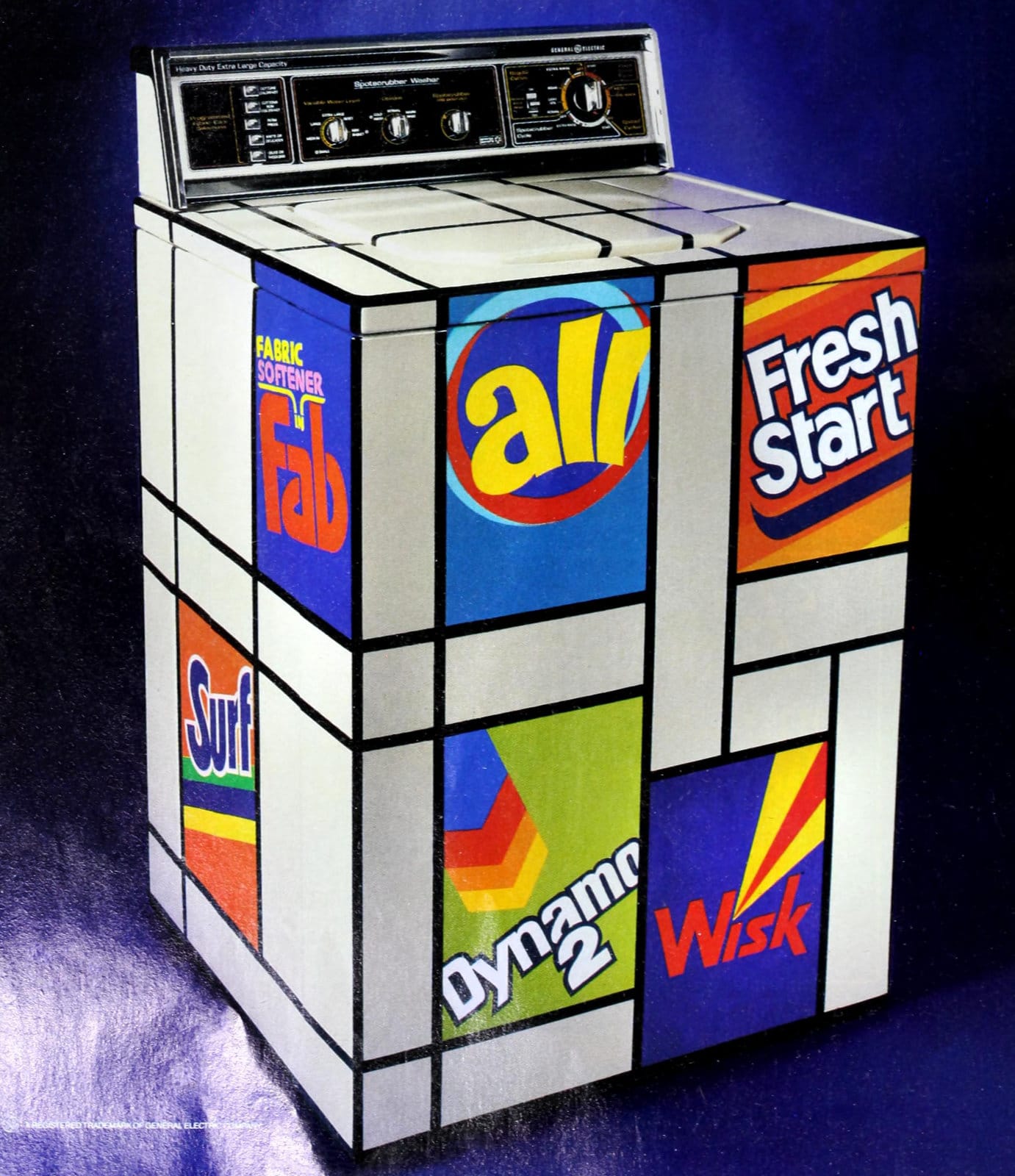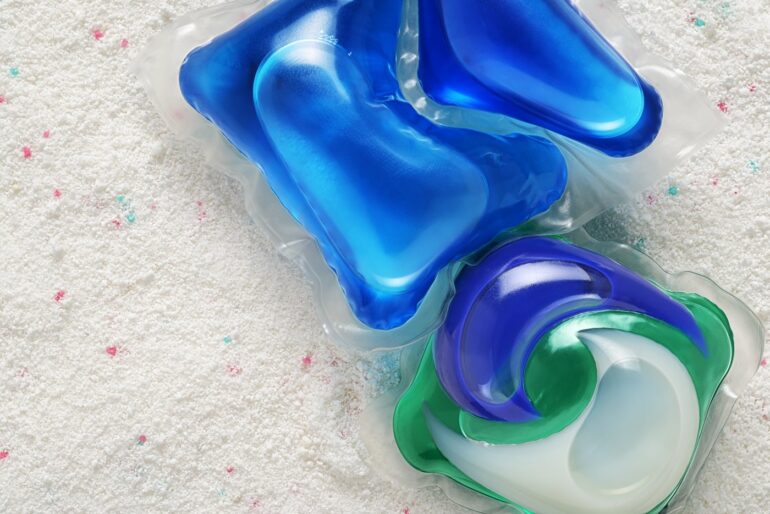Growing up as a Gen Xer, choosing laundry detergent was simple: you just picked one of the colorful boxes on the supermarket shelf based on what was cheap, what smelled nice, or what your mom used.
There were brands like Tide and All and Yes and [all-tempa] Cheer — mostly powders, then later some liquids hit the market.

But then things got more complicated. For one thing, a whole new line of new detergents — along with little washing machine soap pods — became a thing. A lot of the new stuff was labeled as High Efficiency (HE) laundry detergent.
So what’s the difference between HE laundry detergent (like those seen here) and regular good ol’ washing machine detergent? Would HE detergent work just as well in regular washing machines? Or what about using old-fashioned detergent in a newfangled washer?
Highly efficient washing: The basics
First brought to market in the late 1990s, HE washing machines use anywhere from 1/5 to 2/3 of the water that traditional washing machines use. Because there’s less liquid sloshing around, the washers utilize a different cleaning action. The American Cleaning Institute noted that, unlike agitator washers, most HE washers use a “tumbler” system with no agitator.
Since the newer systems are designed to be so efficient, HE washers can use low-water wash and rinse cycles. Therefore, HE detergents are is made to be used specifically in environmentally-friendly washers that use less water than conventional washing machines.
They’re formulated to be low-sudsing, quick-dispersing, and to hold soils and dyes in suspension in low water volumes so they don’t get re-deposited onto cleaned laundry.
You can usually use HE detergent in a traditional washing machine…
Even if you don’t have a new washer with the HE logo on it, in most cases, you can make use of high-efficiency detergents right now. Here’s what four major manufacturers had to say about their products’ cross-compatibility:
- All: “all mighty pacs are safe to use in all washing machines: HE, non HE, top loaders and front loaders.”
- Gain: “If your machine isn’t a high-efficiency model, you can still use HE. It won’t hurt your machine but you will notice fewer suds.”
- OxiClean: The detergent is dual compatible and works in either HE or non-HE machines. Follow directions for usage in your machine type.”
- Wisk: “Wisk Deep Clean is safe for both standard and HE machines.”
That said, some low-sudsing HE formulas might just not be strong enough to really get things clean with the high-water volume used in old-fashioned washers. If you want to use a HE detergent, the amount you use may differ — you might need to experiment a little — and you should expect to see a lot less sudsing action.
…but don’t put regular detergent in your HE machine
So let’s say you upgrade your washer to the newfangled HE version, but still have a lot of leftover regular laundry soap. Wouldn’t it be less wasteful just to use it up?
Our tip: Let it go. Give your old detergent to a friend. You really should not use conventional laundry detergent in HE washing machines — not even a smaller amount — because it will create a lot of suds. Sounds harmless, right?
Well, the ACI explains that excess suds can cause problems in HE washers by “cushioning,” or even preventing, the tumbling action that is cleaning your washload.
The suds can also cause the machine’s pump to overheat, lead to residue buildup… and could even cause suds to overflow from the washer. (Maybe it won’t be quite as bad as Bobby’s suds-astrophe on The Brady Bunch — seen below — but you get the idea.)
Some brands say they have reformulated their detergents to work in all machines. However, the ACI warns that some detergent manufacturers label their detergents “HE Compatible” — but many of these detergents are actually regular sudsing detergents that should not be used in your HE washer.
Why HE is highly efficient in more ways than one
Using a HE washer should lead to a cost reduction on your water bill — and because there is less water to heat, you might even see some savings on your monthly gas or electric statement.
Going eco-friendly with your laundry, however, means more than just lower utility bills for you. As Procter & Gamble noted in April 2014, 25% percent less water used in every bottle of P&G liquid detergent means over 45 million gallons of water saved, fewer plastic bottles (reducing waste and recycling costs) and fewer truck shipments (reducing greenhouse gas emissions and fuel consumption).
But there is a downside — albeit something that will only affect certain groups of people. The concentrated super-efficient detergent can be hazardous in cases where a young child ingests some — which is an even more common danger with pretty, shiny laundry detergent pods, like those shown above. (See the CDC report on detergent dangers here.)
Also, if it’s rubbed in the eyes or gets on the skin of someone with a chemical sensitivity, the extra-strength formula is more likely to cause irritation.
Tl;dr: No, they’re different, and don’t swap regular and HE detergents unless you like overflowing bubbles and/or clothes that aren’t clean.









